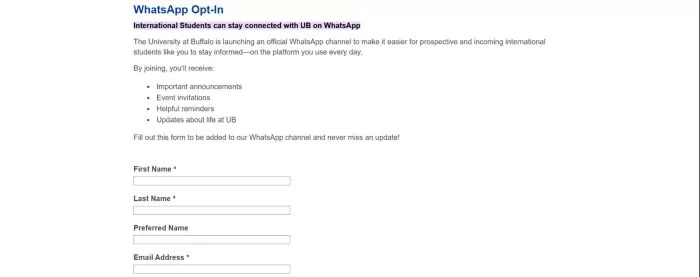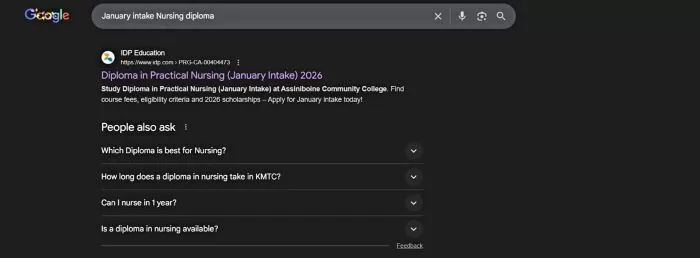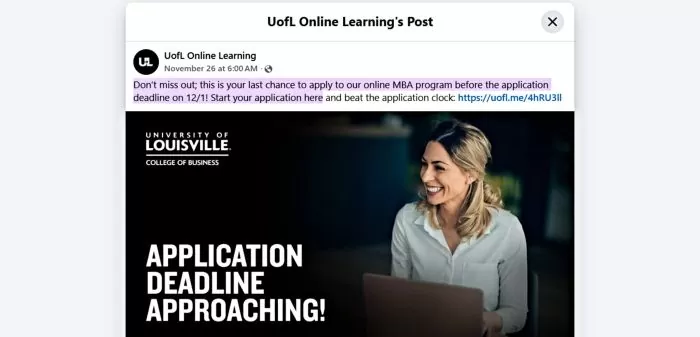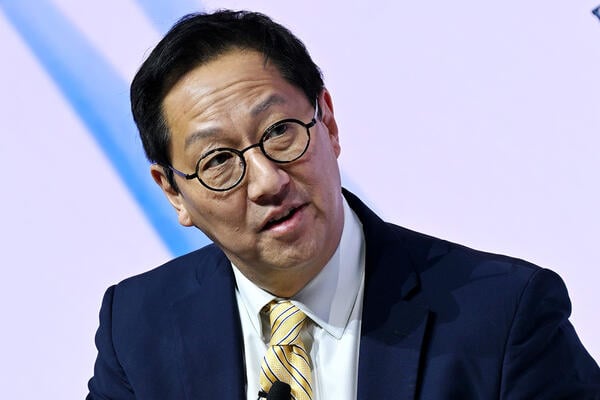When it comes to digital student recruitment, many institutions feel they need to choose between Paid Search vs Paid Social. Budgets are tight. Teams are often siloed; admissions handles one, marketing handles the other. And with so many moving parts, it’s tempting to simplify: pick one channel and double down.
But that’s a false choice. Here’s the reality: today’s prospective students don’t live in a single marketing lane. They might first discover your school on Instagram, then Google you weeks later to check deadlines, read reviews, or submit an application. Search and social are part of the same decision journey, and schools that favour one while ignoring the other are leaving attention, applications, and enrollments on the table.
At Higher Education Marketing (HEM), the right approach isn’t to choose between Paid Search and Paid Social. Instead, the most effective strategy is to combine both channels to engage and optimize the entire enrollment funnel fully. Social media excels at generating awareness and early interest. Search converts when intent is high. Together, they create a powerful synergy, reinforcing your message, capturing more leads, and moving students smoothly from first click to enrollment. In this article, we’ll break down how both channels work, where each shines, and how schools can maximize performance by aligning them strategically.
Changing Search Behaviours in 2025
Student search behaviour is fragmented, fast, and heavily value-driven. Today’s prospective students, especially from Gen Z and Gen Alpha, don’t wait to be told what to think. They research across platforms long before filling out an inquiry form.
This is the Zero Moment of Truth: when students validate a school by triangulating across ads, websites, reviews, and social content. Credibility must show up everywhere, because trust is built before contact is ever made. Zero-click searches, like featured snippets and Google answer boxes, are also reshaping the landscape. Being cited here or placing targeted ads can influence decisions without ever earning a click.
The numbers speak volumes: 41% of Gen Z use social media to search, while only 32% use traditional engines, and 11% use chatbots. Gen Alpha takes it further. Their research is values-first. They’re looking for sustainability, inclusion, and innovation. And they’re starting earlier than ever.
The Power of Paid Social
One of the biggest misconceptions in education marketing is that paid social is only good for brand awareness. While it’s true that platforms like Instagram, Facebook, and TikTok are excellent for reaching new audiences, their real power extends far beyond the top of the funnel.
Paid social can drive leads, retarget warm prospects, and support conversions when used strategically. It allows schools to engage students emotionally through storytelling and keep them in the conversation through personalized messaging and real-time interactions.
Is paid search the same as paid social? No. Paid search displays ads based on keyword searches on platforms like Google, while paid social promotes content on social media platforms like Facebook or TikTok. They target users differently and serve distinct stages of the enrollment funnel.
Best Use Cases:
- Story-Driven Awareness Campaigns: Think student testimonials, day-in-the-life content, or campus highlights. These build connection and trust.
- Lead Generation Ads: Click-to-convert campaigns using forms or optimized landing pages can capture inquiries on the spot.
- Event Promotions and Student Life Visibility: Showcase open houses, webinars, or vibrant campus life to entice prospective students.
Best Practices:
- Awareness Ads: Use high-impact visuals and short videos that highlight a key outcome, like career success or global opportunities. Keep the message clear and focused, with an obvious CTA that invites students to learn more.
- Lead Gen Ads: Avoid generic links to your homepage. Instead, use program-specific landing pages or native lead forms. Segment audiences to tailor messages, and emphasize value on different content, such as scholarships, graduate outcomes, or flexible learning options.
- Messenger and WhatsApp Ads: These are ideal for live engagement. Use them to invite students to ask questions, book a meeting, or receive instant info.
The Case for Paid Search
What is the difference between search and social? While paid social excels at sparking interest and building emotional connection, paid search is unmatched when it comes to capturing high-intent prospects. These are the students actively looking for programs, comparing options, or ready to take the next step. Paid search meets them right at the decision-making moment.
This channel is especially powerful for reaching mid- and bottom-funnel audiences. When someone types “best MBA programs in Canada” or “nursing diploma with January intake,” they are already considering enrollment. Paid search allows schools to appear at the top of those results, capturing attention before competitors do.
On the flip side, what are the disadvantages of paid search vs paid social? Paid search can be costly due to high competition for keywords, especially in education. It also depends on users already showing intent, which limits brand-building. Without complementary channels, it may not generate enough awareness or early-stage interest.
Ideal Use Cases:
- Branded and Program-Specific Searches: Ensure your school shows up when a student searches your name or flagship program.
- High-Converting Keywords: Focus on queries like “apply now,” “tuition fees,” or “open house registration.”
- Deadline-Driven Campaigns: Push applications during key moments, like the final days before a semester starts.
Recommended Tactics:
- Responsive Search Ads (RSAs): Automatically test combinations of headlines and descriptions to maximize performance.
- Dynamic Search Ads (DSAs): Let Google fill in the gaps by matching relevant queries to your website content.
- Intent Segmentation: Use different ad groups and copy for high, medium, and low-intent keywords. This improves quality scores and keeps your messaging relevant.
One of the benefits of paid search is that it enables clarity, timing, and precision to come together to convert interest into action.
Building a Full-Funnel Strategy: Social + Search Together
Many schools fall into the trap of treating paid search and paid social as separate silos. But in 2025’s student journey, they’re two halves of the same enrollment engine. When integrated properly, they guide prospects from first glance to final decision, boosting visibility, engagement, and conversions along the way.
Funnel Roles: How Each Channel Contributes
Let’s break down how these platforms complement each other throughout the marketing funnel:
- Awareness: Paid social leads the charge. Platforms like TikTok and Instagram are perfect for storytelling, aspirational videos, and brand introductions. These top-of-funnel ads help your school get noticed by students who may not yet be actively searching.
- Consideration: As interest deepens, both channels play a role. Paid search catches students researching specific programs or comparing schools, while social reinforces your value with student testimonials, video tours, and real-time answers to FAQs.
- Decision: This is where paid search shines. When students start typing in branded or program-specific queries, they’re ready to act. Paid social can add fuel here with urgency messaging, think deadline countdowns, financial aid reminders, or last-chance open house invites.
- Enrollment: Now it’s about closing the loop. Use search ads to reinforce time-sensitive messaging, while Meta and WhatsApp retargeting keep your brand top of mind and prompt final steps like booking a call or submitting an application.
Matching Platforms to Funnel Stages
To maximize impact, align your platforms with the right funnel phase:
- TikTok & Instagram: Best for awareness and early engagement. Use these channels to build emotional resonance and plant seeds of interest.
- Google & Bing: Ideal for high-intent actions. When students are actively searching for answers, programs, or deadlines, your ads need to show up.
- Meta & WhatsApp: Great for nurturing leads mid-funnel. Messenger CTAs and remarketing help bring students back into the conversation.
- LinkedIn: A go-to for graduate and professional programs, especially among career switchers and upskillers.
- Niche Channels: Want to reach Gen Z authentically? Explore Reddit threads, Snapchat lenses, or user-generated TikToks that mimic how real students talk and share.
What Does This Look Like in Practice?
Here’s how a real-world campaign could unfold:
- Week 1–3: Launch TikTok videos to raise awareness: spotlight student stories, “day in the life” clips, or big-picture program benefits.
- Week 2–3: Add Instagram ads to deepen interest with engaging visuals and strong CTAs.
- Week 3–6: Deploy Google Search ads targeting keywords like “apply to [Program Name]” or “college deadlines 2025.”
- Week 6–8: Use Meta retargeting to reconnect with visitors who didn’t convert, offering application checklists or counselor consult invites.
This layered strategy ensures your message is reinforced across platforms, leading to more informed, confident applicants.
Sample Budget Breakdown
- TikTok Ads: $500
- Instagram Ads: $500
- Google Search Ads: $2,000
- Meta Retargeting Ads: $300
By diversifying spend across the funnel and choosing the right tools for each stage, schools move from guesswork to strategy and from isolated clicks to full-funnel enrollment growth.
Common Mistakes Schools Make
Despite investing in digital ads, many schools fall into avoidable traps that limit performance. One of the most common mistakes is relying entirely on paid search. While it excels at capturing high-intent prospects, paid search often reaches students too late in their decision process. Without early-stage awareness from paid social, those leads may never warm up enough to convert.
Another issue is the widespread misunderstanding of paid social’s role. Some marketers dismiss it as a brand play with no immediate ROI. In reality, paid social plays a crucial role in shaping perception, building familiarity, and generating qualified leads over time. When schools skip this step, they weaken their funnel.
Disjointed campaigns also create problems. Running separate social and search efforts without coordination means you miss opportunities for synergy and message consistency.
Additionally, many schools neglect retargeting. If a prospective student browses your program page but leaves, that should trigger follow-up ads to reignite interest. Failing to retarget leaves valuable leads on the table.
Finally, default settings on ad platforms can be misleading. Relying on them often results in wasted impressions and mismatched audiences. Custom targeting and exclusions are essential to reaching the right students with the right message at the right time.
Search Trends & Emerging Platforms
The digital landscape is evolving rapidly, and student search behaviour is shifting along with it. One major trend is the rising cost and competitiveness of Google Ads. As more advertisers bid on the same education-related keywords, prices continue to climb, making it harder for schools with modest budgets to compete effectively.
At the same time, prospective students are changing how they search. Many now prefer visual, snackable results and quick answers over scrolling through text-heavy webpages. This shift is fueling the rise of social platforms as search engines in their own right.
TikTok is a clear standout. Its new Search Ads feature allows schools to place short, captioned videos directly within search results, reaching students who are actively exploring options.
To stay visible, schools must also optimize their organic content for discovery. Think FAQ-style posts, hashtag strategy, and short videos that answer common questions in the formats students prefer.
Measurement: How to Track Campaign Impact
Running great campaigns is only half the battle; measuring their true impact is where the real insight lies. To understand which channel is delivering results, schools must go beyond surface-level metrics like clicks or impressions.
Start by tracking key funnel metrics: Cost per Inquiry (CPI), Cost per Lead (CPL), Cost per Application (CPA), and Cost per Enrollment (CPE). These figures help quantify the effectiveness of your campaigns at every stage of the recruitment journey.
To gather this data, use platforms that support full-funnel tracking. CRMs like HubSpot or Mautic are ideal for managing contact progression, while Google Analytics 4 provides visibility into multi-touch user journeys across platforms.
Most importantly, ensure that all campaigns are tagged with UTM codes and that your CRM accurately records lead sources. This lets you attribute not just the first click, but the entire path to enrollment, helping you optimize future budget allocation with confidence.
Real-World Examples of Integrated Paid Search & Social in Education
Story-Driven Awareness Campaign: The Rivers School (a private high school in Massachusetts) regularly hosts Instagram student takeovers, where current students share a day in their life via the school’s official Instagram Stories. These takeovers give prospective families an authentic glimpse of campus life. Such story-driven content humanizes the school experience and builds trust with audiences in the awareness stage.

Source: Instagram
Event Promotions & Student Life Visibility: Concord University (West Virginia) ran a Fall Open House campaign on Facebook, urging students to “REGISTER NOW for Fall Open House”. The official post emphasized that whether you’re just starting your college search or already set on Concord, you should “come experience what being at Concord is like”. This call-to-action, boosted to target local high schoolers, drove sign-ups by promising an immersive campus visit.


Source: Instagram
Messenger and WhatsApp Engagement: The University at Buffalo (SUNY) launched an official WhatsApp channel for prospective international students. By opting in, students receive personalized updates – announcements, event invites, deadline reminders – right in WhatsApp, a platform they use daily. This allows UB’s admissions team to handle inquiries and nurture leads through quick chats and broadcasts on a familiar channel.


Source: University at Buffalo
Branded and Program-Specific Search Campaigns: A real example is Assiniboine Community College in Canada, which runs search ads for terms such as “January intake Nursing diploma” – ensuring that students searching for nursing programs with upcoming start dates find Assiniboine’s program page first. By focusing on branded queries (school name, flagship programs) and niche program keywords, schools across the board make sure they capture students who are already intent on a particular school or offering.


Source: Google
High-Converting Keyword Campaigns: Educational marketers also bid on bottom-funnel keywords that signal immediate intent – like “apply now,” “admissions deadline,” or “tuition fees [School].” University of Louisville business school promoted its online MBA program with an urgent message: “Don’t miss out – this is your last chance to apply before the application deadline on 12/1! Start your application here.” By targeting such high-converting phrases in ads and search (and using urgency-laden copy), schools push motivated prospects to take action.


Source: Facebook
Recap: Why You Need Both Paid Search and Paid Social
Schools that depend on just one marketing channel risk falling behind. Students don’t stick to a single path when researching their options. Instead, they move fluidly between search engines and social platforms, using both to gather information, compare schools, and make decisions.
This is why a dual-channel strategy matters. Paid Social helps schools introduce themselves, tell a compelling story, and spark curiosity early in the decision journey. It creates awareness and builds emotional connection. Paid Search, on the other hand, reaches students who are actively looking for specific programs, deadlines, and next steps. It captures intent and drives action.
When both channels are aligned, schools gain full-funnel coverage. Retargeting efforts become more strategic, and nurture campaigns stay relevant from the first interaction to enrollment. As a result, conversions improve and return on investment increases.
But to unlock the full value, schools must track every touchpoint, not just the final click. Integrating CRM data with UTM tags and analytics tools ensures you’re seeing the full picture and making smarter marketing decisions moving forward.
Frequently Asked Questions
Question: Is paid search the same as paid social?
Answer: No. Paid search displays ads based on keyword searches on platforms like Google, while paid social promotes content on social media platforms like Facebook or TikTok. They target users differently and serve distinct stages of the enrollment funnel.
Question: What is the difference between search and social?
Answer: While paid social excels at sparking interest and building emotional connection, paid search is unmatched when it comes to capturing high-intent prospects. These are the students actively looking for programs, comparing options, or ready to take the next step. Paid search meets them right at the decision-making moment.
Question: What are the disadvantages of Paid Search?
Answer: Paid search can be costly due to high competition for keywords, especially in education. It also depends on users already showing intent, which limits brand-building. Without complementary channels, it may not generate enough awareness or early-stage interest.










